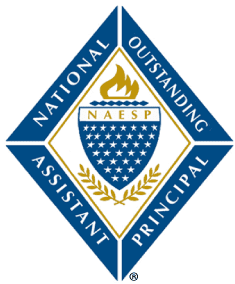
Anna Taggart
Brookview and Woodland Hills Elementary Schools
West Des Moines, Iowa
ataggart@waukeeschools.org
Best Practices
1) As an administrator, relationships are the foundation of leading a school. There is so much that goes into the operations of a school, but a school cannot be successful without the principal building positive relationships first.
- Staff: It is crucial that staff members know that I know them as a whole person and that I care about them and trust them as professionals. I am very present in the schools and the classrooms. My first priority every morning no matter which school I am at is to walk around the school, visit classrooms and talk with teachers and students. I make every attempt to be in every classroom, every day. I want staff to know I am their biggest advocate. My goal in every observation and reflective conversation is to help nurture and support them in the same way teachers are supporting students to reach their full potential. Building relationships with staff members is also important for the times when we do have to have more difficult conversations. People want to work for someone who believes in them and they respect.
- Students: I strongly value student relationships. My goal each year is to get to know each student’s name, which between the two schools is over 1,200 students. I spend time in classrooms reading to classes, teaching lessons, helping assess students, and supervising lunch and recess. The students at both buildings know me and see me frequently. My favorite is that the kindergarteners at both buildings kindly refer to me as “Mrs. Tiger” no matter how many times they are told that it is Taggart. I have come to embrace and love every Mrs. Tiger I hear. I do handle behavior management in both buildings, but my role is so much more than that. If there is a student I am seeing more frequently there is something greater behind that and it is my job to help solve and find ways to get to the root of the behavior.
- Families: When I sent my first child to kindergarten, it was a lightbulb moment that I was sending my whole world to school and entrusting them to the teacher and the leaders of the school. I think of that every time I am with a student, even the students with challenging behavior; they are someone’s whole world. I do not take that lightly. I take that into consideration when a parent is advocating for the child, as well. They may come off as abrupt or harsh, but their perspective matters. I am on their team and we work through them together to make a plan.
The best practice is to make solid relationships with families. Communicate often. Provide opportunities for families to come to the school. Be visible in the community. I attend a church where a large majority of the students from both of my buildings attend and they get to see me outside of school being a mom and a real person.
2) Every decision I make as a leader revolves around what is best for students. It is vital that every student feels loved and taken care of each day. Being a school administrator, I need to be able to make thoughtful, deliberate decisions and the best way to do that is to use data and feedback. Using the MTSS process for both academics and behaviors allows us to identify the outliers. It is an important belief of mine that we as a staff should not be afraid of data to steer or ship. If we are identifying that 1st grade math is stagnant or moving backward according to data, it would be my job to create a sense of urgency for us to spend time during professional learning with 1st grade focusing on small group math instruction. The data is not presented to the staff in order to highlight deficits necessarily but to identify areas of needed focus because that is what is best for our students. It would be impossible to create this culture without building relationships with your staff and fostering a safe environment where the staff wants to grow, learn, and make changes to do what is best for all students. Keeping students at the forefront of all decisions can lend itself to challenges for underperforming staff. I believe in the importance of having constructive conversations with underperforming staff and creating a plan moving forward for supporting them in doing what is best for students. This work starts with the leaders of the building. If the principal and assistant principals of the building lead with love and hold the expectation that all staff members do as well, it will be reflected in every wall of the school.


